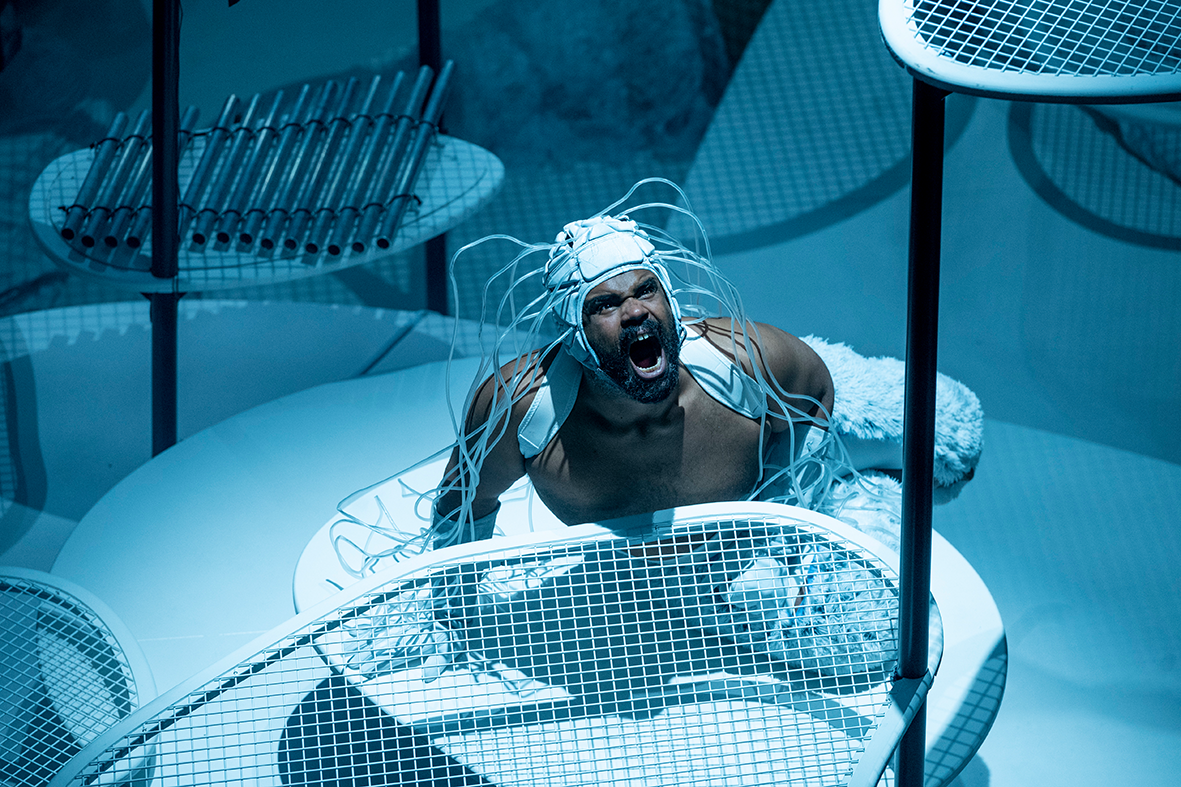
ARCHIPEL
A spectacle of blending for ensemble, choir, electronics, 3D-Sound and 10 dancers
Nature has become an artefact, people and plants have developed a provocative new association. After the end of the world as we know it, a neo-humanoid presence will appear and explore an archipelago of possibilities: invisible biological links and symbioses in which human reproduction is a thing of the past. Inspired by this vision, architecture, dance and music enter a new alliance.
The sculpture by Japanese architect Sou Fujimoto is not only a stage, landscape and protective space, it is also a musical instrument whose sounds dancers and musicians elicit, share and develop together. The choreography by Stephanie Thiersch and music by Brigitta Muntendorf operate by blurring genres in search of understanding.
ARCHIPEL is based on the socio-politically and ecologically provocative and revolutionary thesis „Making kin. Not babies.“ by biologist, science and gender researcher Donna Haraway. In her book „Staying with the trouble“ she sketches a society of future beings, who in a productive and willful way become related to animals, plants, corals and bacteria and follow the formation and further development of sensory receptors and perception apparatuses instead of reproduction, thus expanding the concept of kinship in the sense of relatedness across familial, ideological or regional boundaries.
At the heart of ARCHIPEL is a concept of art that focuses on synesthetics and transdisciplinarity. What happens when a futuristic-organic architecture engages with the generation of sound, music, when dance becomes a generator of sounds and its space experiences a constant challenge in architecture, which music in turn transforms? To what extent can Fujimoto’s installation address issues such as the use of resources, animate the shifting of boundaries, or enable the simultaneous experience of „here“ and „there“?
The performers:inside enter into dialogue with all genres and challenge each other to the extent that their „languages“ and „habitat“ on the sculpture evoke rededications of meaning, reusability, and misappropriation. In the collaborative process, the artistic language is created by performers and musicians: From utopian, empathic, and hierarchy-less communalizations to forms of group reguation, secession, and loneliness to dystopian unions, ARCHIPEL seeks ceremonies of radical conflation.
3D Sound
The composition consists of different segments: The score includes both 11 musicians and 16 singers as well as the voices of the dancers group as live performers, besides that the sculpture as s sound object and the instruments implemented in it form a separate instrumental corpus and the third level is formed by live electronics and tape.
These three segments are distributed in space as 3D sound in over 60 loudspeakers around the sculpture, i.e. the different sounds appear as musical objects in space. The decision for the 3D environment was made during the course of the pandemic: the Norwegian Soloists’ were unable to travel to Germany, so the entire choir score was pre-produced between Cologne and Oslo and the 16 voices are arranged as virtual sound objects in the space along the musical score. ARCHIPEL was originally conceived as a walking concert – since this is also not possible in Pandemic, the process of movement can be reversed through 3D sound and the sounds can move around the audience.
About Sou Fujimoto
Sou Fujiimoto is considered the most important Japanese architect of the younger generation. Inspired by organic structures, Fujimoto explores the boundaries between the natural and built environment and develops fascinating visions for an architecture of the future.
Fujimoto founded in 2000 Sou Fujimoto Architects and works in his offices in Tokyo and Paris. Among his most famous works are the Naoshima Pavilion and the Serpentine Gallery (London).
„I am investigating the relationship between nature and architecture. What are the differences, what could be the similarities? That’s what interests me.
After all, our main task as architects is to create a better environment. I don’t want to deal with nature because it’s fashionable at the moment. Rather, I want to question its relationship to architecture more profoundly.“